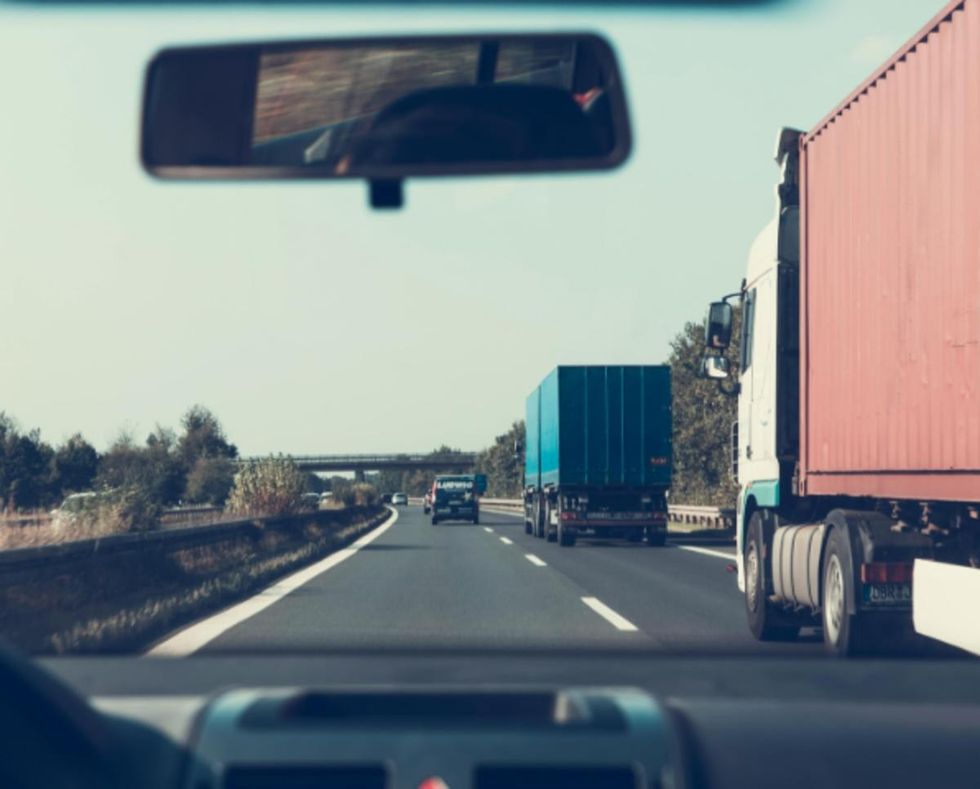Driving comes with its own set of rules—some official, others unspoken. For UPS drivers, one key guideline is to avoid left turns. According to The Conversation, instead of taking shortcuts or making left turns, UPS drivers follow a calculated route for a very intentional reason.

The primary reason for this practice is safety: on most U.S. roads, left turns require crossing oncoming traffic, making them riskier and more disruptive. By prioritizing right turns, UPS drivers help reduce delays and minimize accidents.
Most drivers tend to choose the shortest route, assuming it will be the quickest. However, this approach can increase traffic congestion. UPS drivers take it a step further by opting for optimized, not just shorter, routes. By prioritizing open roads with fewer left turns and minimal traffic, they reduce delays and get to their destinations more efficiently.

Avoiding left turns also helps UPS drivers minimize fuel consumption and avoid traffic-related delays. Journalist Tom Vanderbilt explains, “Left-turning traffic typically has to turn against a flow of oncoming vehicles. This can not only be dangerous but makes traffic build-up unless you install a dedicated left-turn ‘phase,’ which is fine but adds 30 or 45 seconds to everyone else’s single time,” per CNN. Apart from saving time and lives, the no left-turn rule also helps save fuel and maintain the vehicle’s health.

A key strategy UPS uses to boost efficiency is limiting left turns to only about 10% of drivers’ routes, saving an estimated 10 million gallons of fuel each year. Avoiding left turns prevents drivers from idling in traffic, which wastes fuel and strains the vehicle. Jack Levis, senior director of UPS Process Management, explained, “A left-hand turn is also less fuel efficient because your car’s idling longer, which is not good for your vehicle.”

He added, “We will make left-hand turns, but not unnecessary ones. We don’t need to go in circles all day long by making only right-hand turns. We have tools to analyze the number of left-hand turns for each route, and we can work out which ones are avoidable.” UPS drivers have picked the smarter route and drivers of private and other vehicles are also encouraged to follow the same. The benefits of saving fuel, losing traffic, and avoiding accidents, as well as dangers are a win-win situation for all vehicle owners.
This article originally appeared 3 months ago.


















 Holding hand of patientImage via Canva - Photo by Pitchaya Pingpithayakul
Holding hand of patientImage via Canva - Photo by Pitchaya Pingpithayakul Holding the hand of a patient.Image via Canva - Photo by Portra
Holding the hand of a patient.Image via Canva - Photo by Portra

 This is not a 9 to 5 job.Image via Canva - Phot by Olaser
This is not a 9 to 5 job.Image via Canva - Phot by Olaser On a Zoom call from home.Image via Canva - Photo by Drazen
On a Zoom call from home.Image via Canva - Photo by Drazen The same comfortable outfit choice.
The same comfortable outfit choice.  At the park with the doggies.Image via Canva - Photo by gradyreese
At the park with the doggies.Image via Canva - Photo by gradyreese  Work birthday party.Image via Canva - Photo by South_agency
Work birthday party.Image via Canva - Photo by South_agency
 There's little reason for police to touch your vehicle anymore.Photo credit: Canva
There's little reason for police to touch your vehicle anymore.Photo credit: Canva
 Photo of art created by James Cook depicting the London skyline at Trinity Buoy Wharf Lighthouse.Image pulled from
Photo of art created by James Cook depicting the London skyline at Trinity Buoy Wharf Lighthouse.Image pulled from  Portrait of American Gothic from series, "Famous Paintings Throughout History" by James Cook.Image pulled from
Portrait of American Gothic from series, "Famous Paintings Throughout History" by James Cook.Image pulled from  Women use the typewriter to push themselves into the workforce.Image from Canva - Photo by DAPA Images.
Women use the typewriter to push themselves into the workforce.Image from Canva - Photo by DAPA Images.

 Analyzing how you think could help you think better overall.
Analyzing how you think could help you think better overall.